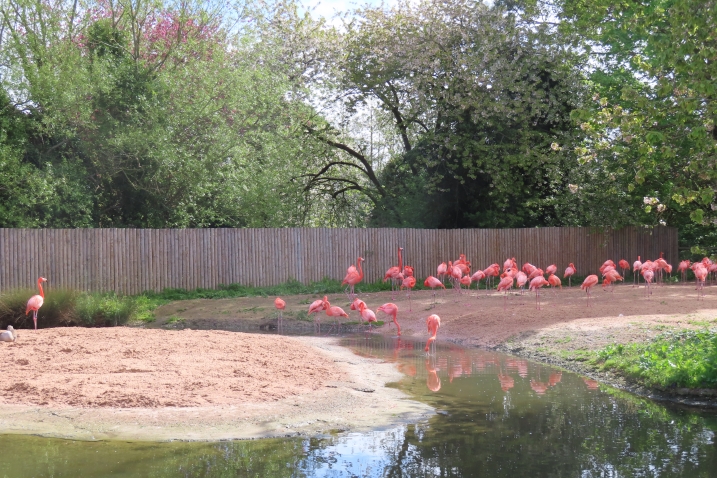Conserving South American flamingos- interview with a scientist
Welcome to July, and some lovely summer sunshine. We love the heat at WWT for it means flamingo breeding season, and the best conditions for rearing strong, healthy chicks. Flamingos adore sunshine- one of the ways of keeping them happy is to make sure their enclosures get as much access to direct sunshine as possible. Several species of flamingo occur in wetlands high up in the mountains. Here they are exposed to maximum amounts of sunshine, which is important for coordinating their social behaviour.
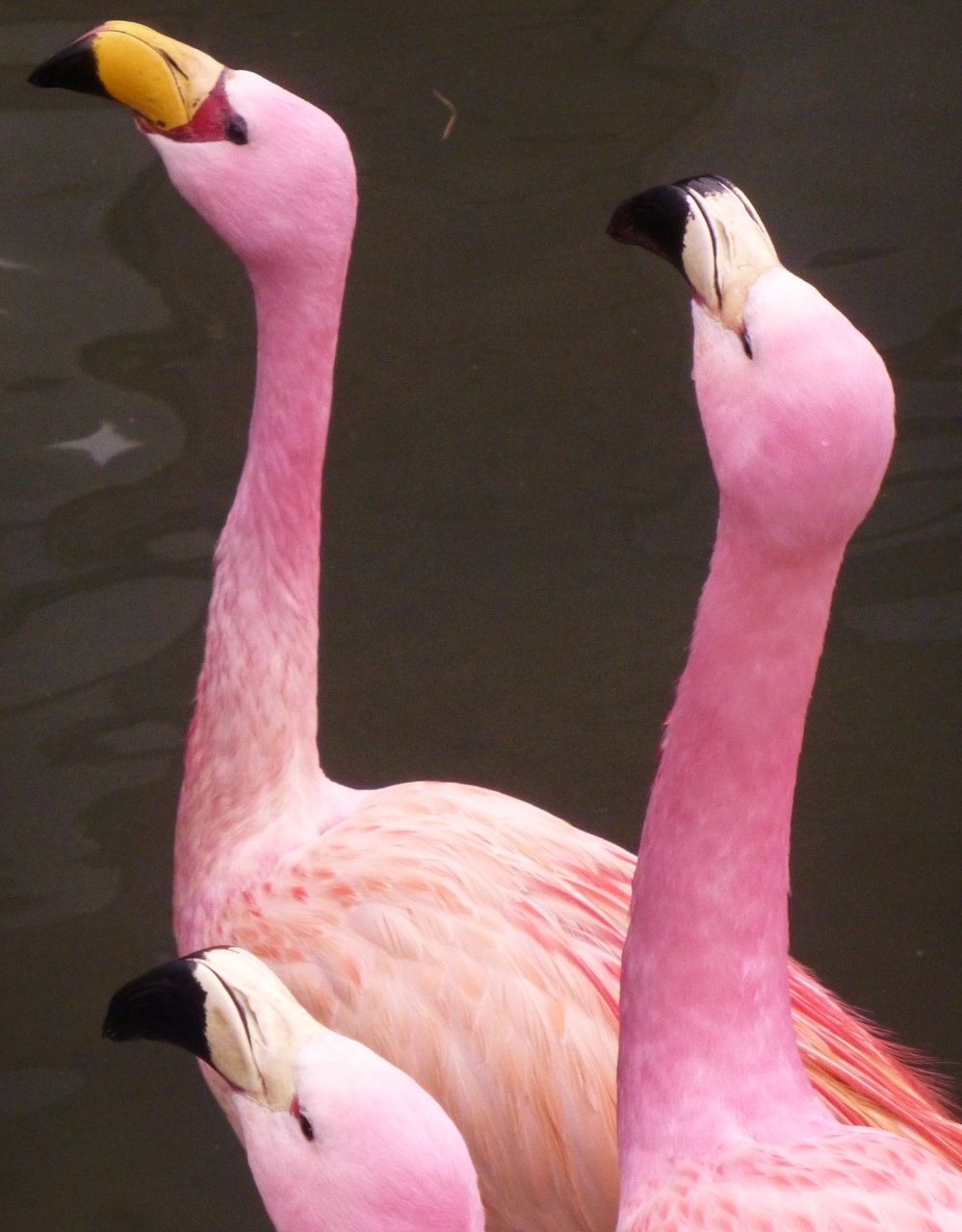 We all know Mr James and his friends. Well in this post, meet his wild cousins and the people trying to save them.
We all know Mr James and his friends. Well in this post, meet his wild cousins and the people trying to save them.
It is the three South American flamingos that are these highland specialists, occurring in flocks across the Andes Mountains. They are three of the most important flamingos from a conservation perspective; populations are under threat from some unlikely causes. The demand for lithium in phone and laptop batteries for example... read on for more.
To combat these threats, a group of dedicated conservationists and scientists are working closely with local people across the Andes to ensure that flamingos and people can live side-by-side.
So in this flamingo diary, I am going to introduce to you Dr Felicity Arengo from the American Museum of Natural History, in New York, who has been running conservation projects on the South American flamingos for a number of years. Dr Arengo is a key member of the Flamingo Specialist Group, and has an incredible knowledge of both flamingo biology and how to do "on the ground" conservation. So a perfect excuse for me to not only tell you all about her work with Chilean, Puna (James') and Andean flamingos in the wild, but to also plug these species that you can come and see at WWT Slimbridge.
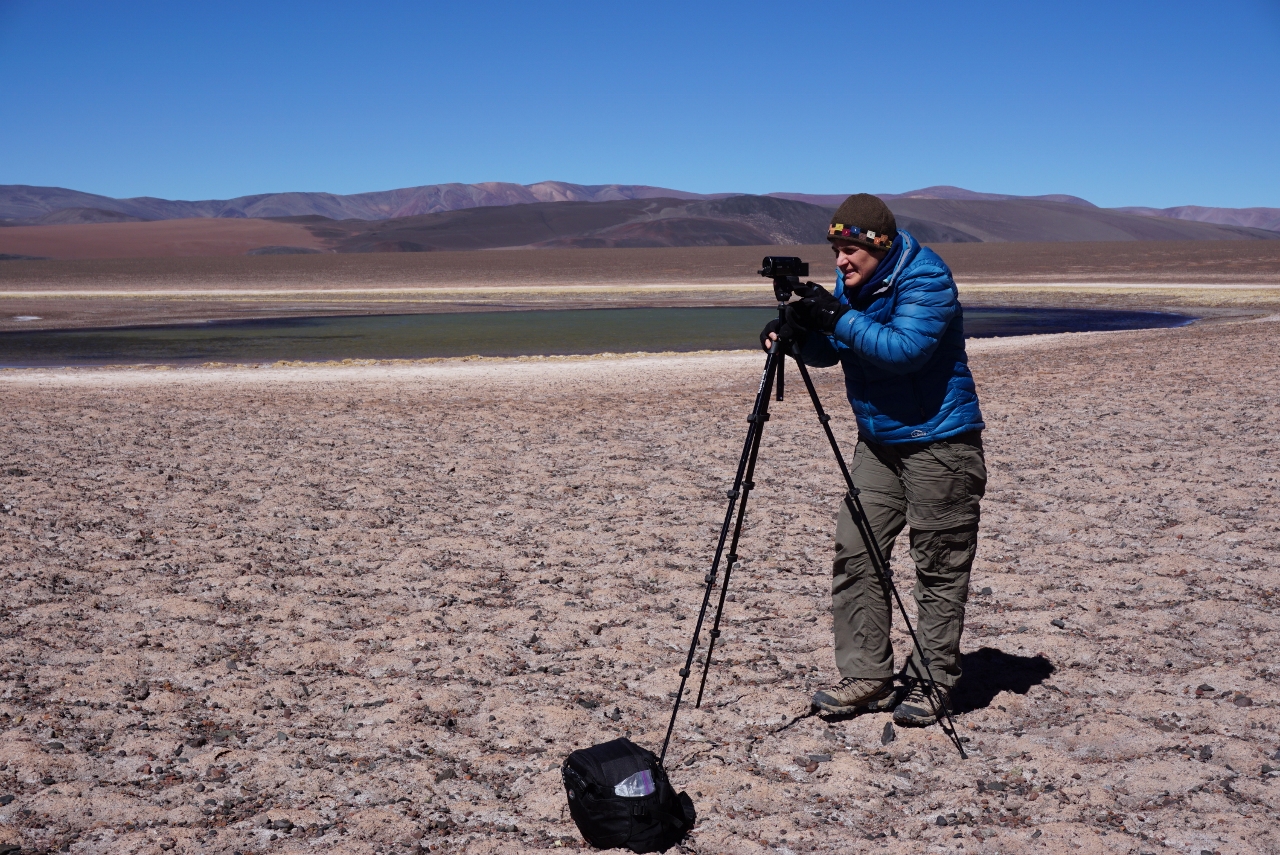 Dr Felicity Arengo from AMNH works closely with local people across South America to conserve threatened flamingo populations.
Dr Felicity Arengo from AMNH works closely with local people across South America to conserve threatened flamingo populations.
Dr Arengo is an Associate Director of the Center for Biodiversity and Conservation (and you can find out more about her work here: http://www.amnh.org/our-research/staff-directory/felicity-arengo). Back in 1998, she joined the new "Grupo de Conservación Flamencos Altoandinos" (GCFA), or High Andes Flamingo Conservation Group- a regional initiative of researchers and conservationists primarily from South America. The aim of the GCFA is to conserve the three species of flamingo in this "Southern Cone" that have overlapping ranges. Dr Arengo says:
"The Chilean flamingo is more widespread, while the Andean and Puna flamingos have a more restricted range and smaller population sizes than the Chilean flamingo. The focus of this group are the Puna and Andean flamingos whose ranges span Argentina, Bolivia, Chile, and Peru."
For more information on the work of the GCFCA see their Facebook page: https://www.facebook.com/groups/853334894707756/
Because the ranges of these three species overlap, and all three species can be found in some of the wetlands monitored by the GCFA, the group's activities encompass all of the South American flamingos. However, Dr Arengo is more focused on the wetlands within the range of Andean and Puna flamingos, which are mostly in the high Andes of Argentina, Bolivia, Chile and Peru, and lowlands in central Argentina. Dr Arengo and the GCFA 'keep tabs' on the population of Chilean flamingos, as this species can be found in a wider variety of wetlands, including coastal wetlands so it is simply so much more widespread. Dr Arengo goes out to her field sites in the Andes Mountains around once-a-year. She has a coordinating role for several regional activities, and participates directly in monitoring field work and training activities undertaken (e.g. counting birds, ringing birds, and helping with the long-term population management of these flamingos).
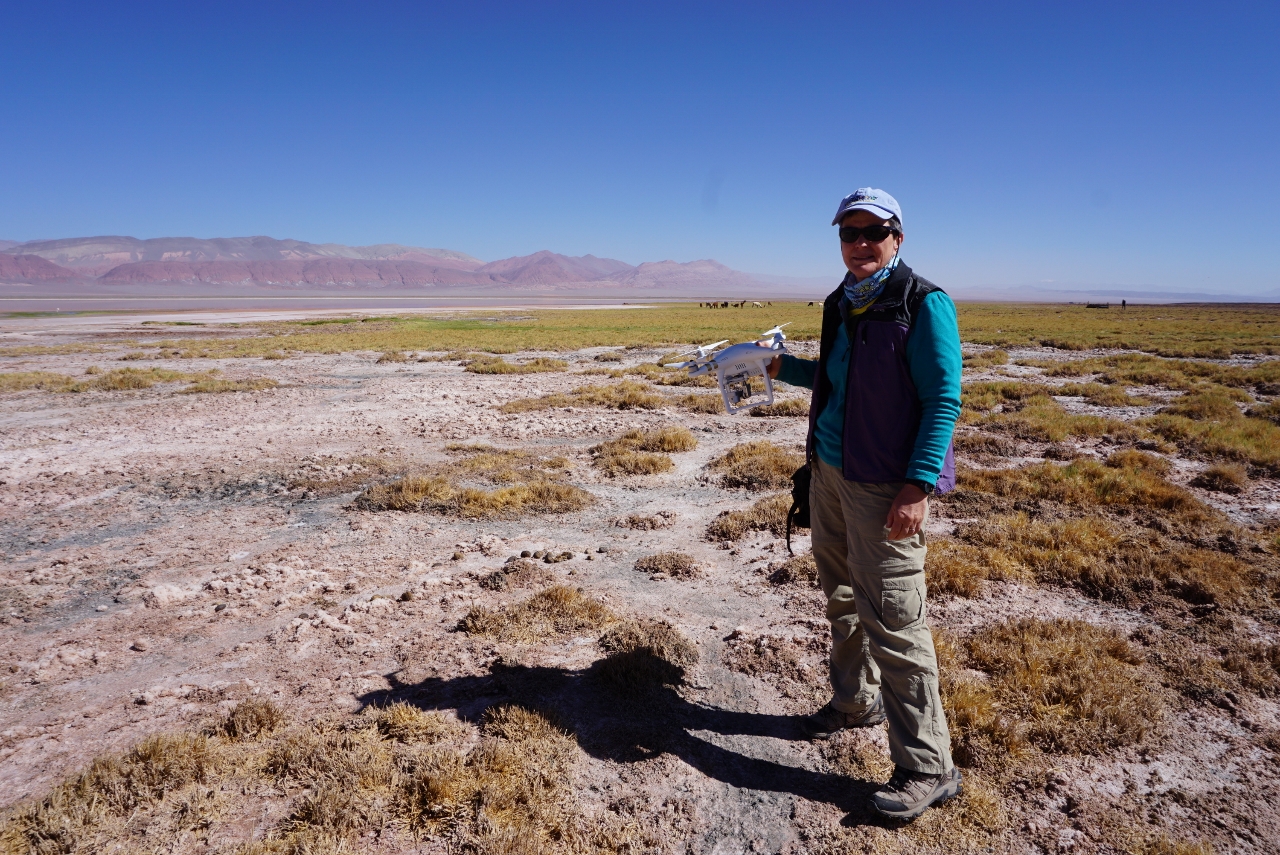 Using a drone to monitor wetlands, when done correctly, can help add enormous amounts of useful data to conservation research. Photo credit: P. Marconi.
Using a drone to monitor wetlands, when done correctly, can help add enormous amounts of useful data to conservation research. Photo credit: P. Marconi.
I asked Dr Arengo what current flamingo science she is involved in. Her reply was:
"I participate in the regular population censuses. This past year I was involved in training environmental monitors, members of the communities near flamingo wetlands, to identify species and collect observational data on the birds and habitats in a systematic way. This group of monitors, which includes tour guides, teachers, business owners, now has the skills to record and report notable information, and send us their observations. The sites are quite remote, so having 'eyes and ears on the ground' is very important."
I also asked how the output from Dr Arengo's research and population monitoring has been used for flamingo conservation. She said:
"When we first started working in these remote sites almost 20 years ago, little was known about them. We collected a lot of the baseline biodiversity data, which was then used to designate, in some cases, protected areas. We were successful in helping get national parks declared, provincial reserves, and several Ramsar wetlands of International Importance."
Ramsar is an international convention dsigned to protect especially important wetlands. See: http://www.ramsar.org/
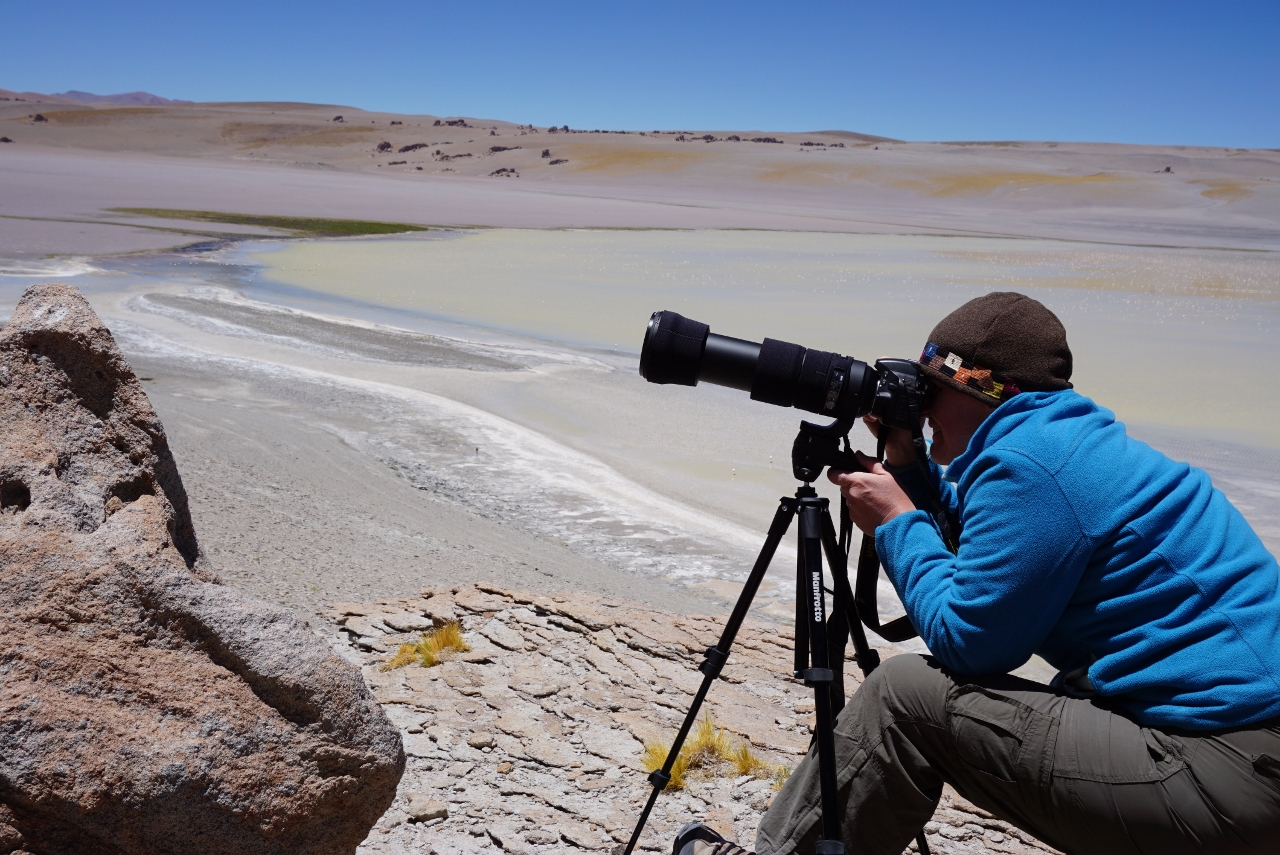 What a view! Monitoring highly-nomadic populations of flamingos requires patience and team-work. But the results are very rewarding. Photo credit: P. Marconi.
What a view! Monitoring highly-nomadic populations of flamingos requires patience and team-work. But the results are very rewarding. Photo credit: P. Marconi.
Dr Arengo's work also informs site-based management and conservation. She says:
"At a nesting colony in Chile the GCFA set up a ranger station with permanent protection during the breeding season. At a site in Argentina we developed zoning and interpretive signage. Our continued monitoring and presence at the sites allows us to work with the local people to help define the needs, and determine what actions are appropriate in each case."
It is clear from the work that Dr Arengo does, links with local communities is key to the future survival of these amazing birds.
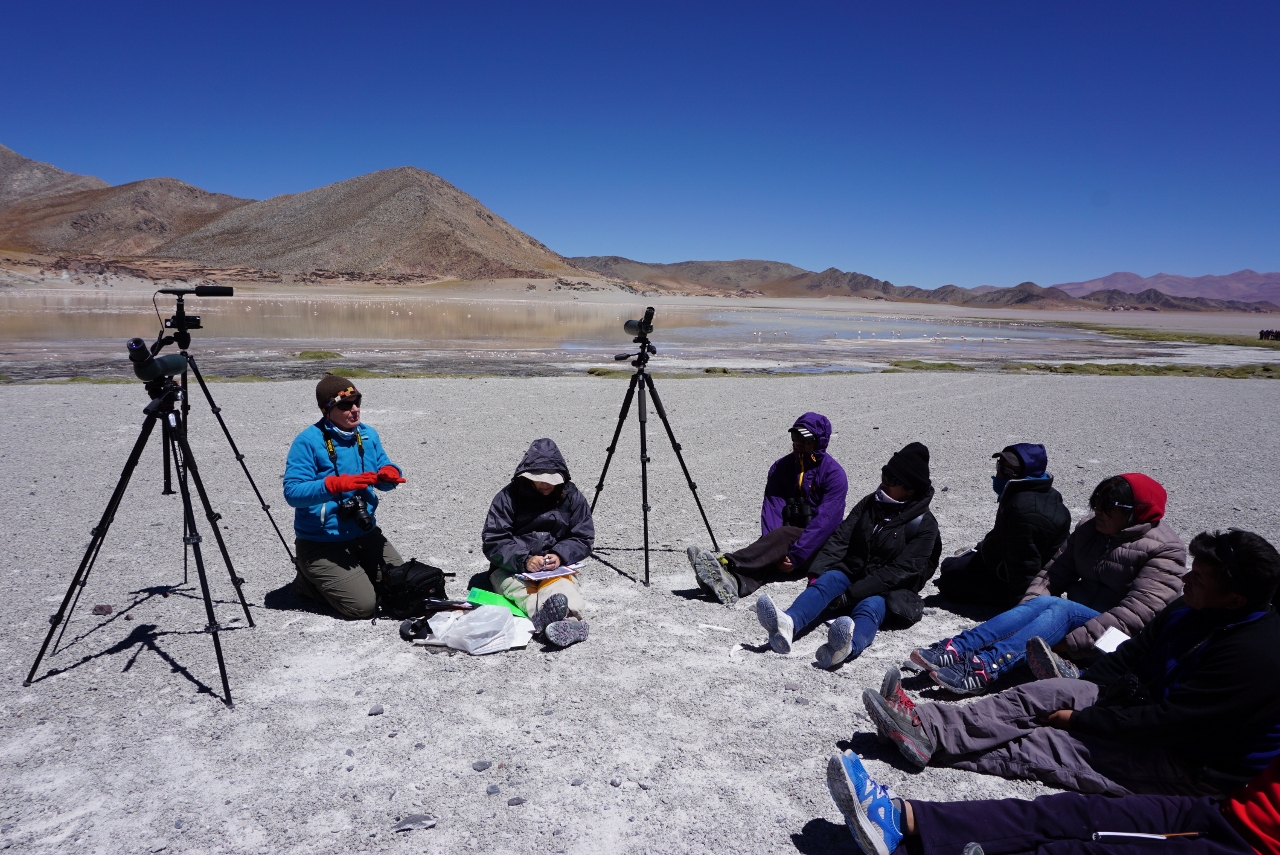 Dr Arengo helps to coorindate vitally important recording & monitoring work that provides crucial data on where flamingos are, and how many are around. Photo credit: P. Marconi.
Dr Arengo helps to coorindate vitally important recording & monitoring work that provides crucial data on where flamingos are, and how many are around. Photo credit: P. Marconi.
So what are the threats to the future of Chilean, Andean, and Puna flamingos? Dr Arengo gave a mixed response to this... some positive, some very worrying.
"Because we have some good conservation measures in place (particularly in nesting colony protection) in the past, it is possible that populations are increasing compared to estimates from the 1970s. While we are cautiously optimistic, there are emerging threats that are very alarming."
"Global climate change is projected to affect the glaciers that feed the Andean wetlands and affect precipitation patterns in this area where water is scarce to begin with. Also, the Andean wetlands are rich in minerals and lithium is particularly of interest. Lithium production is projected to skyrocket over the next decade (it already increased exponentially in the last decade) as the market for rechargeable batteries (in computers, phones, and especially electric vehicles) continues to grow. We have already seem several mining companies prospecting and setting up exploration camps. The “lithium triangle” where the largest reserves are in Argentina, Bolivia and Chile coincides exactly with the areas of highest flamingo concentrations…"
Working with mining companies, to reduce environmental impact, follow regulations, and respect protected areas is key here. After all, this can be a "green energy" and something that potentially comes with a lot of benefits for the planet.
Conservation work for these birds maybe now showing fruition, but was started nearly four decades previous. This is a stark reminder that flamingo ecology works over the long-term, and we need to ensure that birds around now can still produce 40, 50, 60 years into the future.
 Not the final flight for the James's flamingo we hope. Conservation work might be helping to raise numbers, but new threats keep emerging. Photo credit: F. Arengo.
Not the final flight for the James's flamingo we hope. Conservation work might be helping to raise numbers, but new threats keep emerging. Photo credit: F. Arengo.
Finally, I asked Dr Arengo is there had been any new, or exciting, findings from her research that provided an understanding of flamingo biology that we didn't know about already. She gave this incredible example:
"We tracked Andean flamingo movements with satellite transmitters. That allowed us to know how far individual flamingos would range and how many different wetlands they used during the year. We found a lot of variation, where some individuals used a smaller set of wetlands, and others were very far ranging (and would fly over 1000 km in a few days), using a variety of wetlands, from up at 4,000m down to practically sea level. The satellite data also revealed new wetlands that we did not know were flamingo habitats and we were able to extend the 'known' range for the species."
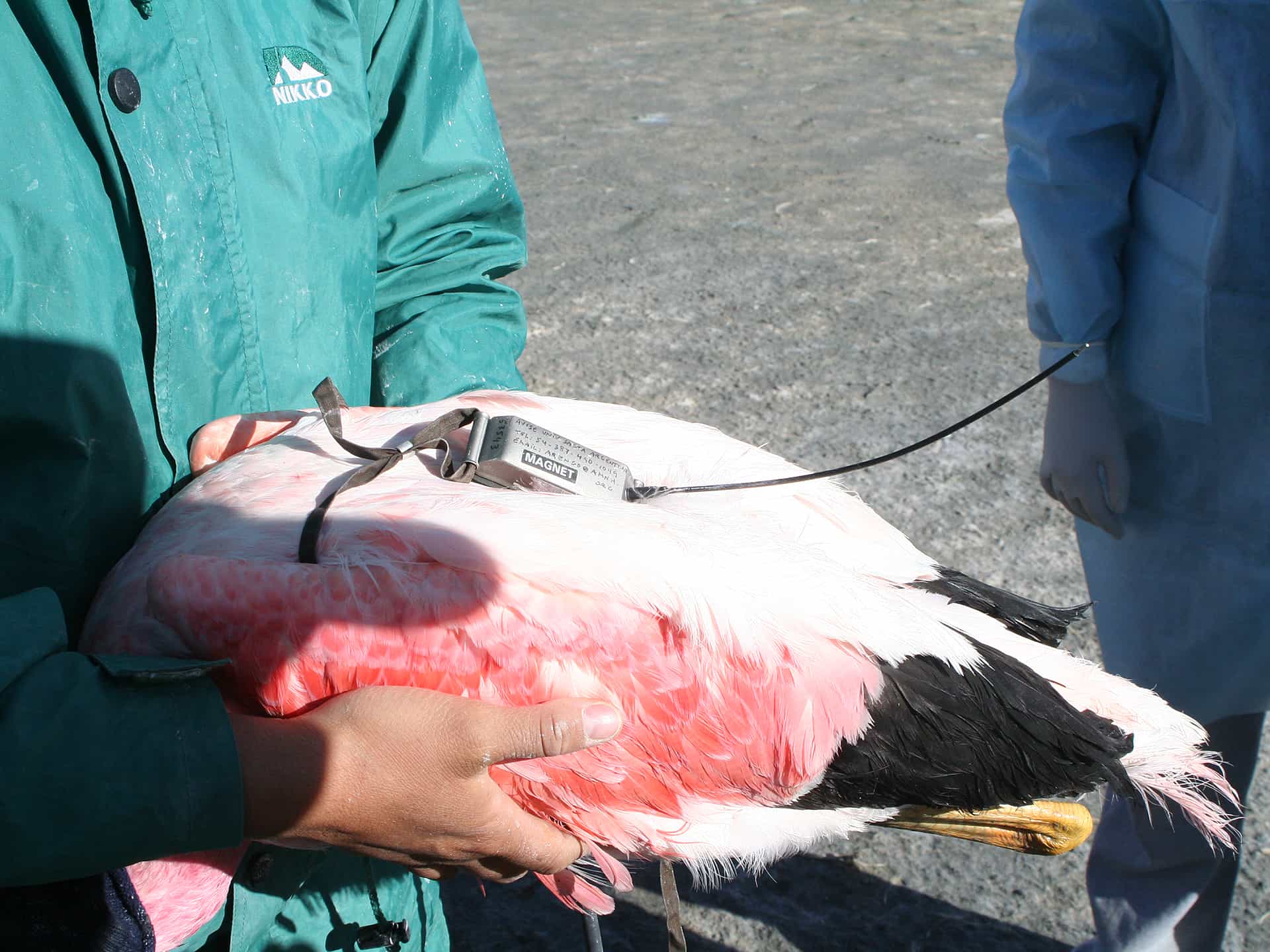 How far will you go little flamingo? A long way so it seems... Andean flamingo wearing a satellite tracking harness to monitor the wetlands it uses. For this, and other amazing photos see: http://www.amnh.org/explore/ology/zoology/in-pictu... Photo credit: AMNH.
How far will you go little flamingo? A long way so it seems... Andean flamingo wearing a satellite tracking harness to monitor the wetlands it uses. For this, and other amazing photos see: http://www.amnh.org/explore/ology/zoology/in-pictu... Photo credit: AMNH.
Whilst South American flamingos are now what keeps Dr Arengo busy, she has also studied another species, the Caribbean flamingo. This bird was the subject of her PhD that was investigating the behaviour and ecology of Caribbean flamingos in the coastal wetlands of Yucatan, Mexico. You can find an example of her work on these flamingos here: http://www.jstor.org/stable/1522149?seq=1#page_scan_tab_contents
A big thank you to Dr Felicity Arengo for being interviewed for this blog. If you are flamingo adopter at WWT (and if not, why not?!) then I believe your next adoption update will be focussing on the Andean flamingos, and Mr James (of course). So I hope you have especially enjoyed this extra South American insight, it's great to see the passion and dedication of those working so hard to conserve wild flamingo populations. Be sure to come and say hello to the three high-mountain flamingos on your next visit to WWT Slimbridge.
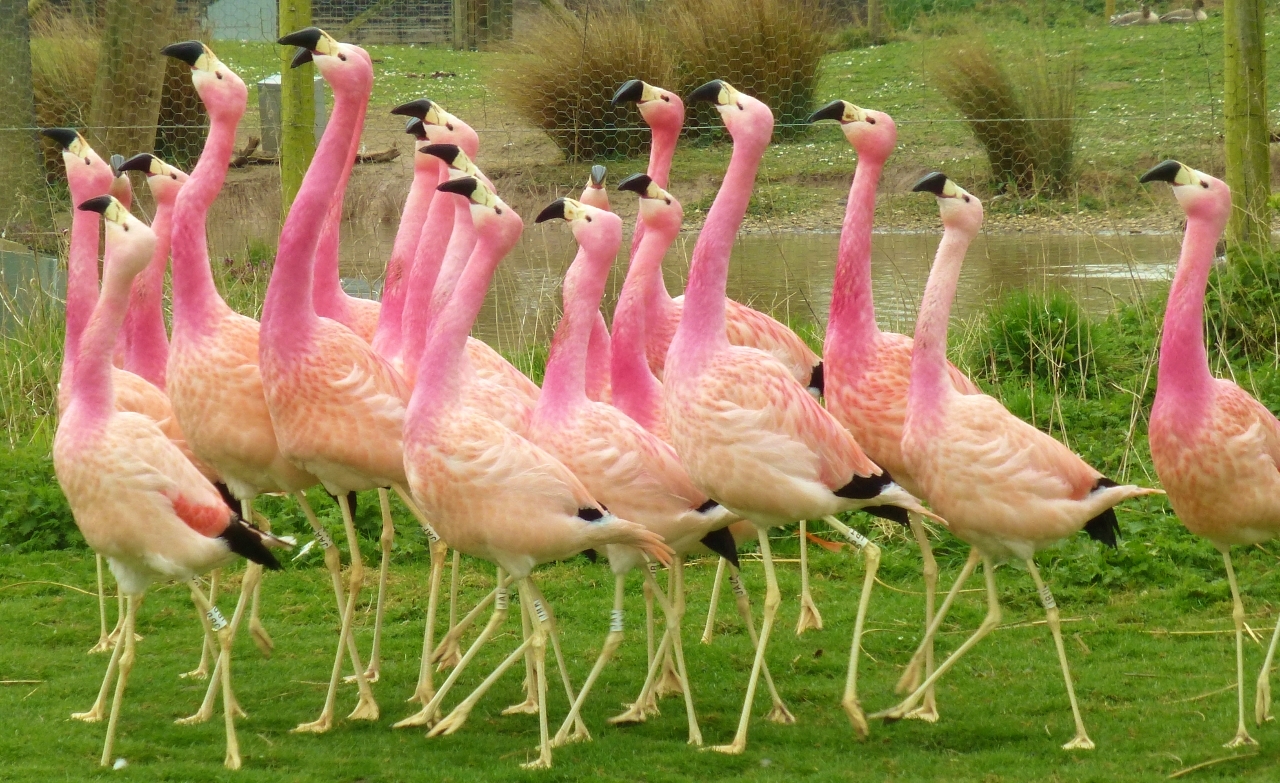 Strutting their stuff. Hopefully the incredible display of the Andean flamingo will continue long into the future.
Strutting their stuff. Hopefully the incredible display of the Andean flamingo will continue long into the future.
